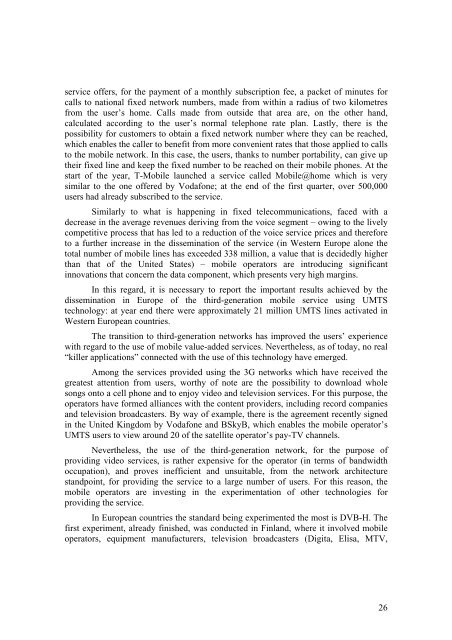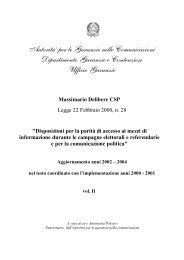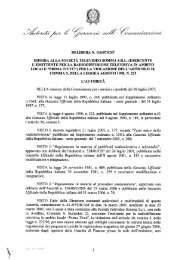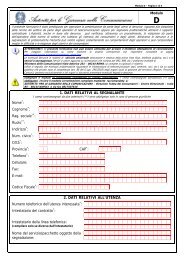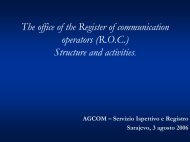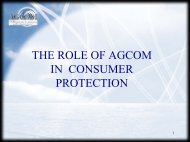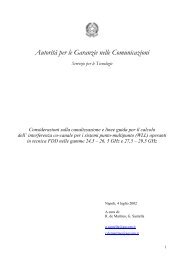Communications Regulatory Authority
Communications Regulatory Authority
Communications Regulatory Authority
Create successful ePaper yourself
Turn your PDF publications into a flip-book with our unique Google optimized e-Paper software.
service offers, for the payment of a monthly subscription fee, a packet of minutes for<br />
calls to national fixed network numbers, made from within a radius of two kilometres<br />
from the user’s home. Calls made from outside that area are, on the other hand,<br />
calculated according to the user’s normal telephone rate plan. Lastly, there is the<br />
possibility for customers to obtain a fixed network number where they can be reached,<br />
which enables the caller to benefit from more convenient rates that those applied to calls<br />
to the mobile network. In this case, the users, thanks to number portability, can give up<br />
their fixed line and keep the fixed number to be reached on their mobile phones. At the<br />
start of the year, T-Mobile launched a service called Mobile@home which is very<br />
similar to the one offered by Vodafone; at the end of the first quarter, over 500,000<br />
users had already subscribed to the service.<br />
Similarly to what is happening in fixed telecommunications, faced with a<br />
decrease in the average revenues deriving from the voice segment – owing to the lively<br />
competitive process that has led to a reduction of the voice service prices and therefore<br />
to a further increase in the dissemination of the service (in Western Europe alone the<br />
total number of mobile lines has exceeded 338 million, a value that is decidedly higher<br />
than that of the United States) – mobile operators are introducing significant<br />
innovations that concern the data component, which presents very high margins.<br />
In this regard, it is necessary to report the important results achieved by the<br />
dissemination in Europe of the third-generation mobile service using UMTS<br />
technology: at year end there were approximately 21 million UMTS lines activated in<br />
Western European countries.<br />
The transition to third-generation networks has improved the users’ experience<br />
with regard to the use of mobile value-added services. Nevertheless, as of today, no real<br />
“killer applications” connected with the use of this technology have emerged.<br />
Among the services provided using the 3G networks which have received the<br />
greatest attention from users, worthy of note are the possibility to download whole<br />
songs onto a cell phone and to enjoy video and television services. For this purpose, the<br />
operators have formed alliances with the content providers, including record companies<br />
and television broadcasters. By way of example, there is the agreement recently signed<br />
in the United Kingdom by Vodafone and BSkyB, which enables the mobile operator’s<br />
UMTS users to view around 20 of the satellite operator’s pay-TV channels.<br />
Nevertheless, the use of the third-generation network, for the purpose of<br />
providing video services, is rather expensive for the operator (in terms of bandwidth<br />
occupation), and proves inefficient and unsuitable, from the network architecture<br />
standpoint, for providing the service to a large number of users. For this reason, the<br />
mobile operators are investing in the experimentation of other technologies for<br />
providing the service.<br />
In European countries the standard being experimented the most is DVB-H. The<br />
first experiment, already finished, was conducted in Finland, where it involved mobile<br />
operators, equipment manufacturers, television broadcasters (Digita, Elisa, MTV,<br />
26


